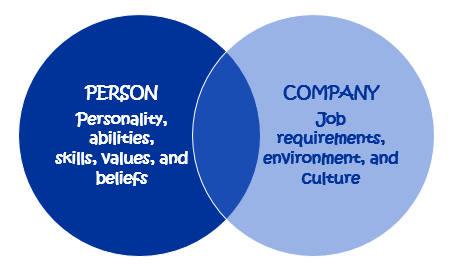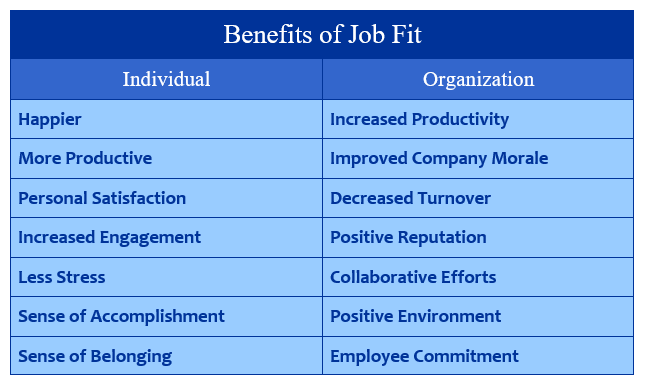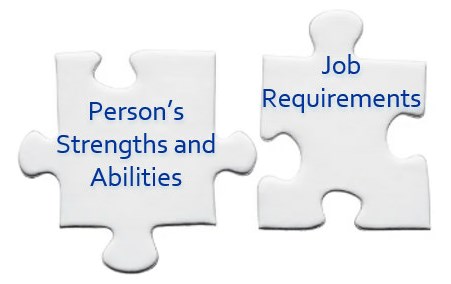Job Fitting
Job fitting is the action of aligning a person’s strengths and abilities with the job requirements. The process involves identifying individual employee competencies and matching those to competencies required for the job.

Job Fit Defined
Job fit refers to how well an employee is suited for his or her position. Basic job fitting measures both the abilities of the person and the competencies required to successfully perform the job functions. However, effective job fitting encompasses an employee’s personality, abilities, skills, values, and cultural fit.
Benefits of Job fitting
It is important for companies to ensure that their employees fit the job they are hired to perform. Employees who are well-suited for their positions will be happier and more productive, which will have a positive impact on an organization’s bottom line.
Whether a person is happy or not with their job, they tell other people. This can create a good or bad reputation for the company and affect the pool of potential employees.
Job Fitting improves employee engagement and job satisfaction, resulting in increased employee productivity. It can also reduce negative factors including stress and boredom that could lead to production issues and employee turnover.

Hiring for Job Fit
Job fit starts with the hiring process. Hiring employees who are the best fit for their positions will help an organization to increase productivity and decrease turnover.
Competencies and Culture Fit
If a company does not hire for job fit, they run the risk of long term problems. Highly talented individuals who are not a good cultural and organizational fit will be dissatisfied at work, lack motivation, and will be more likely to leave the company. Conversely, someone who integrates well with the culture and people, but does not possess the needed technical skills will struggle at work and impact overall performance. Therefore, it is essential to match both competencies and culture fit as part of the hiring process.
Not Talent Alone
Hiring the most talented person and hiring for job fit is not the same thing. You can hire the most talented person, but if they do not possess the right personality, it can affect that job and other jobs around it. Job fit not only impacts the individual employee, but the satisfaction and productivity of coworkers and supervisors. If a person is not satisfied in their position, they can drag others down too. Therefore, it is essential to consider the person’s ability to bond and collaborate with colleagues as an element to how well he or she will fit.
Job Fitting Techniques
Effective job fitting techniques during the hiring process can gage whether a candidate’s personality, values, interests and skills match the competencies that are required for a certain job. When they match, both the employee and the organization experience a good job fit. A good job fit leads to happier, more dedicated employees, rather than stressed and underperforming ones.
Employment personality tests can be used to assess a wide range of personality traits associated with job fit so that companies can feel more confident that their employees will be content in their positions.
Job Fit for Performance Improvement
In addition to the hiring process, job fit should be assessed during performance assessments. If a person is underperforming in a certain position, it is important to consider whether the employee would be better suited for another role within the company before opting to let him or her go. It may be best to transition that person into another position within the company, rather than lose a valuable employee.

